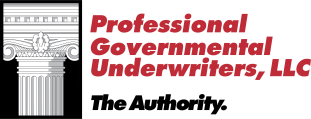Maximizing Safety in an Active Shooter Threat

Charter Schools vs. Public Schools: Key Differences
April 13, 2020
Establishing a Code of Conduct for Public Officials
April 27, 2020Maximizing Safety in an Active Shooter Threat
The rising threat of an active shooter in the United States has put a new light on the need for more awareness and resources around protecting citizens and students alike from the dangers of community violence. While there is no fool-proof plan available in order to completely rid the country of threats, helping to reduce the risk of exposure to life-threatening situations should be the goal of active shooter safety procedures.
According to the Federal Bureau of Investigations (FBI), active shooter events have seen a significant rise in the last decade. Between 2014 and 2015, the U.S. saw 20 active shooter incidents, representing six times as many incidents from a decade before. Communities need to be better prepared and more aware of these facts and the threats they face at any given moment with active shooter issues.
Here are some ways that safety can be maximized during a threat.
Active Shooter Safety Measures You Can Prepare Now
A good first step for citizens and students is to be aware of their surroundings. If they see anything suspicious, they should be encouraged to let an authority figure know right away. Resources and specific response plans promoted by workplaces, schools, houses of worship, and local municipalities should be sought after as well if only to stay educated and aware.
When visiting a building, especially for the first time, always look for accessible exits nearby and map out potential places to hide. Whether you’re out to eat, at school, at work, or out shopping, there are always areas to find safety, such as behind heavy doors or furniture.
Staying Safe During a Threat
Getting away from active shooters should be the top priority while a threat is occurring. People should be encouraged to drop their items and leave their belongings behind and run away. If it’s safe to do so, others should be warned nearby to take cover or escape.
When in a safe location, away from an active shooter, the authorities should be called. A description of the shooter or shooters should be given with as many details as possible including looks, what they’re wearing, their location, and weapons they’re using.
If people cannot find an exit or get away to safety, they should hide by getting out of the shooter’s view and staying very still and quiet. All electronics should be silenced or turned off so they won’t make any noise or vibrate. Inside a building, office, home, school, etc., all windows should be locked and closed, as well as doors and blinds.
Groups should be discouraged from forming as people should be spread out along walls or hide separately to make it more difficult for the shooter. Communication with police should be done silently through text messages or by putting signs out if possible. Everyone should stay in place until law enforcement gives notice that all immediate danger is gone.
The very last resort of an active shooter response should be to fight and defend yourself. Those who choose this course of action should commit fully to their actions and act aggressively in order to stop the shooter and limit their potential damage.
Following a Shooting
When a shooting is over and the threat is no longer there, follow law enforcement’s instructions and evacuate the area in the direction that is directed. For those emotionally and/or psychologically affected by the event, they should seek help to cope with the long-term effects of this kind of traumatic incident.
While active shootings remain a threat, and while they can happen in practically any location, citizens should not be discouraged to feel safe when out in public. By adhering to their tips and staying informed through resources, knowing how to prepare for and react to a shooting situation can be the combination that keeps citizens alive and well.
About PGUI’s Active Shooter Coverage
Professional Governmental Underwriters, Inc., is a full-service risk management company who offers specialized active shooter insurance coverages and is dedicated to assisting public, educational and non-profit entities in the management of their professional liability exposures. We are dedicated to providing state-of-the-art professional underwriting management and loss control advisory services on behalf of our designated carriers. For more information, call us toll-free at (800) 586-6502.


